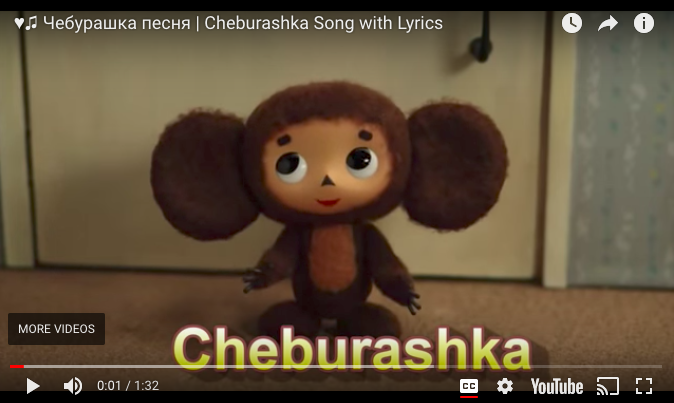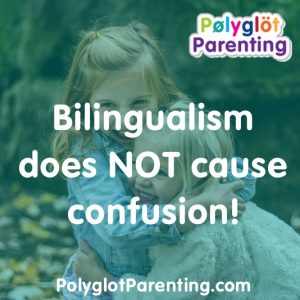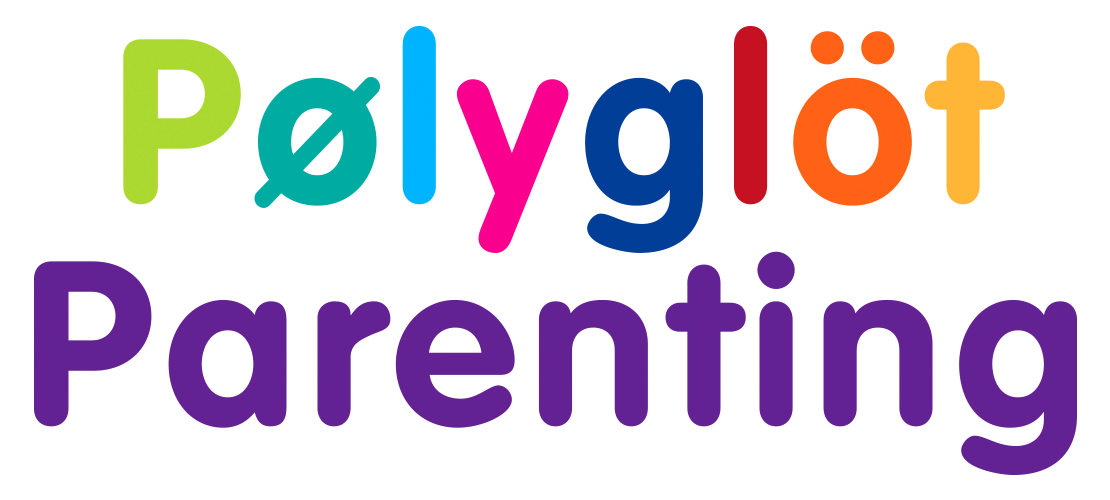A Simple Music Tip for Busy Parents
Kids need lots of exposure to a foreign language in order to gain and maintain fluency, and music is a super fun, easy, and effective way to add more language into your life! You can sing songs with your child, go to concerts, listen to albums, or put on a YouTube playlist of kid’s songs. Songs, poems, nursery rhymes, or really any things that rhyme are great to expose your kids to in their minority language. Rhymes make words memorable and sticky in your mind. Plus, clapping along with and singing along with nursery rhymes or songs is fun and motivating for kids.
However, it’s not always easy to find time to serenade our kids with heritage language lullabies. For a quick and easy way to put on some background music, you can use a YouTube playlist of kid’s songs in your desired language. (To reduce screen time for kids, be sure to play the songs so that the audio can be heard but the video can't be seen.) If you want to put your chosen playlist on “set it and forget it” mode so that you don't have to keep an eye whether that playlist is almost done or not: you can use an outside website that shuffles YouTube playlists (such as http://youtube-playlist-randomizer.valami.info/) and keep your chosen song list playing in random order indefinitely.
I’ve included links to youtube playlists in a number of languages here for your convenience. If you can’t find your language listed here, simply search [Your language] kid’s songs on Youtube and be sure to filter by playlist, or if you want to shuffle a chosen playlist, go to http://youtube-playlist-randomizer.valami.info/ and follow the directions from there. Now go forth and play some beautiful music!
Spanish:
Russian:
French:
Chinese:
Polish:
Korean:
Japanese:
German:
Italian:
Hebrew:
Swedish:
Czech:

***
For more tips on raising bilingual children, check out Polyglot Parenting's online course, How to Raise A Bilingual Child.
Or, for individualized advice, families raising bilingual/multilingual children may find it useful to create a custom Family Language Plan with the help of a bilingual professional. If having a guide to help you navigate the ins and outs of implementing effective and realistic bilingual methods and strategies sounds helpful to your family, contact me for a 60 minute initial consultation via Skype.
The Key to Reaping the Awesome Benefits of Bilingualism
Recent research has revealed that being bilingual has numerous amazing cognitive benefits. When bilinguals speak one language, they are suppressing the rules and elements of their other language. This takes mental flexibility; it's essentially mental exercise. This exercise keeps your mind sharp and limber, which seems to be one reason why bilinguals have proven advantages over monolinguals in terms of ability to multitask, focusing in on relevant information, and filtering out unnecessary information. All that mental exercise and agility works as a preventative factor against Alzheimer's, too. Other benefits of bilingualism include better metalinguistic awareness (which in turn strengthens literacy skills), better problem-solving skills, the social benefits of being able to communicate with a larger number of people and fit into a larger number of environments, and more future career prospects. Who wouldn’t want all of those nifty benefits?
The key piece of information that is often missing from the discussion of these wonderful benefits is the best way to ensure such advantages. The key is additive bilingualism, as opposed to subtractive bilingualism.
Additive bilingualism is knowing more than one language at a high level of proficiency. People who gain and maintain fluency in two languages tend to have many opportunities to use both languages in a wide variety of contexts, spend decent amounts of time using both languages, and also have an internal desire to maintain both languages.
In contrast, subtractive bilingualism is replacing knowledge of one language with knowledge of another. This can manifest as gaining skills in one language while simultaneously losing proficiency in another language. One example of how a subtractive bilingual situation in the U.S. might look: Say a family with young children moves from a non-English speaking country to the U.S., switches the household language to English. The children of the family go to school in the majority language and make friends with monolingual English-speaking children, mostly forget their first language, and they become subtractive bilinguals.
For subtractive bilingual children, during the in-between phase of their first language falling into disuse and being forgotten, while they are still learning English, they may not be able to express themselves fluently in either language. This in-between transitional phase seen with subtractive bilingualism can be frustrating for the child, and if language barriers grow between themselves and speakers of their first language, that can be a further source of frustration or a feeling of loss, in some instances.
Another benefit of additive bilingualism is that it fosters a feeling a part of two cultures, whereas subtractive bilingualism is more associated with a feeling of loss of culture.
It’s of note that one of the most persistent myths of bilingualism is that one language must always be learned at the expense of another, the assumption being that the amount of space in your brain devoted to knowledge of language is like a pie. By this way of thinking, if a person wants to give some of those brain space “pie slices” to English, they have to take pieces of the pie away from another language the person knows. Sure, language learning CAN look like this (i.e. subtractive bilingualism) but it does not HAVE to look like this (i.e. if additive bilingualism is supported.) The truth is that one language does not necessarily have to be learned at the expense of another. In terms of the brain's processing power, there is no need to sacrifice first language fluency in order to gain second language fluency. Our brains have the ability to accommodate multiple languages, and bilinguals have even been proven to have denser and more gray matter in relevant areas of the brain than monolinguals. Indeed, counterintuitively to the “pie” theory outlined above, recent research points to additive bilingualism leading to even better knowledge of both languages!
Instead of the pie analogy, it’s more accurate to view how the brain does two language as an iceberg, aka the Common Underlying Proficiency model: Skills in different languages (e.g. grammar, syntactical structures) live in the same part of the brain, reinforcing each other at the base while differing on the surface level. Increased skills in one language support and strengthen language skills in the other language.

Ok, so the best way to reap the benefits of bilingualism is additive bilingualism. The question is, how do you encourage additive bilingualism? The answer is to create an environment that is supportive of maintaining and gaining skills in both of your child’s languages.
Some definitions before we delve deeper here:
Majority language: the language that the majority of the people in a country speak (In the US, English)
Heritage language/Minority language: a language that is not the main language of the country one lives in
How do you create such a supportive environment? Broadly speaking, what’s needed for both of the child’s languages are: plenty of exposure, a need to use it, a positive attitude towards the language, and motivation to use it. Of course, this is all easier said than done!
Some overall guidelines for fostering additive bilingual environments:
Fill in some of the spaces of life that are normally silent with the minority language: There are countless ways to squeeze more exposure into everyday life of the minority language. Examples include playing music in the background at home, telling tall tales while doing errands with your kids, posting labels around the house in the minority language to support literacy- the sky’s the limit!
Think outside the box to find more opportunities to get lots of minority language exposure: Examples include dual language schools, weekend heritage language programs, foreign language summer camps, classes that your child would take anyway (e.g. dance, sport, art, or musical instrument lessons) in the minority language, and much more. Every family has to find the right combination of opportunities that are most practical and feasible for them. Use your imagination and you can find opportunities for language exposure that fit your family’s situation in all sorts of places!
Spend quality time with native speakers of the minority language: Whether it’s relatives, members of your community who share your heritage language, hosting an exchange student in your home, or visiting a place where your minority language is the majority language, there are many unique ways to come in contact with speakers of the minority language. If you can spend time with people who speak only the minority language, that creates a natural need and motivation for the child to use the language, too.
***
For more tips on raising bilingual children, check out Polyglot Parenting's online course, How to Raise A Bilingual Child.
Or, for individualized advice, families raising bilingual/multilingual children may find it useful to create a custom Family Language Plan with the help of a bilingual professional. If having a guide to help you navigate the ins and outs of implementing effective and realistic bilingual methods and strategies sounds helpful to your family, contact me for a 60 minute initial consultation via Skype.
Dispelling Confusion About "Bilingual Confusion"
 Monolingualism may be the norm in the U.S., but throughout most of the world, kids speak more than one language.[^1] In the past few decades, research has revealed more and more benefits of bilingualism. This has contributed to a resurgence of American parents interested in supporting their children in becoming bilingual, but parents understandably still have many questions. In my experience as a Bilingual Parenting Consultant and Speech-Language Pathologist, a very common concern from parents about raising children bilingual is that the child will be “confused”. Allow me to put your mind at ease. Since different people use the word “confused” to mean different things, I’ll break the responses down into five concerns and address each one in turn.
Monolingualism may be the norm in the U.S., but throughout most of the world, kids speak more than one language.[^1] In the past few decades, research has revealed more and more benefits of bilingualism. This has contributed to a resurgence of American parents interested in supporting their children in becoming bilingual, but parents understandably still have many questions. In my experience as a Bilingual Parenting Consultant and Speech-Language Pathologist, a very common concern from parents about raising children bilingual is that the child will be “confused”. Allow me to put your mind at ease. Since different people use the word “confused” to mean different things, I’ll break the responses down into five concerns and address each one in turn.
Common fears about bilingualism:
- My child will not know which words belong to which language.
- My child will mix two languages together when speaking.
- My child will be generally overwhelmed by dual language exposure, negatively impacting all cognitive functions.
- My child will not understand that some people speak only Language A, some only Language B, and some are bilingual.
- My child will not know which is the “real” word for an item.
Common concern #1: “My child will not know which words belong to which language.”
Monolingual people have one language system represented in their minds. Decades ago, researchers (mistakenly) thought that bilingual children under the age of three years have one language system in their minds too, composed of a hodgepodge of bits and pieces of two languages jumbled together at random. This myth lives on today despite having been debunked by research of the past few decades. The truth is, bilingual kids have two language systems represented in their minds from the very beginning of the time they can speak, and possibly even earlier than that.[^2]
Part of the reason this myth persists is that bilingual children sometimes switch back and forth between languages (“bilingual code-switching”). Although on the surface this behavior might seem like the result of a confused child, bilingual code-switching is neither an indication of confusion nor an inability to differentiate between the two languages. Research shows that even two-year-old bilingual children from homes where one parent speaks each language have the ability to switch between their languages appropriately based on context both with familiar speakers and strangers alike.[^3]
Common concern #2: “My child will mix two languages together when speaking.”
Mixing two languages together is nothing to worry about and is not a sign of confusion. In fact, it’s a common and normal stage of a child’s language development. This is especially true for preschool-aged children, as the language mixing stage most often occurs between the ages of two and four years.[^2]
Bilingual code-switching may sound “mixed up” on its surface, especially if you yourself can’t understand both of the person’s languages. However, bilingual code-switching is a sophisticated means of language usage that goes by its own set of inherent rules and structures, and allows children to fill in linguistic gaps in their still-developing ability to communicate precisely what they want to say.[^2]
After the developmental phase of language mixing, children will generally be able to switch between speaking their languages one at a time, without mixing. It’s been proven that even kids as young as two from homes where one parent speaks each language can figure out the strongest language of an unfamiliar person they’re speaking with without being directly told, and they tend to switch languages accordingly.[^3]
If you are the parent of a bilingual kid who “code-switches” frequently and one of your goals is to minimize this behavior, one thing you can do is speak only one language at a time in the presence of your child. This gives children a clear, whole, grammatically correct language model to aspire to. It can also help the child be able to distinguish as quickly, easily and early as possible which language is which. Having said all that, it’s fine and sometimes inevitable to mix languages here and there; it is simply a fact of life in many bilingual homes. Switching between languages mid-sentence is not harmful, but speaking full sentences in one language at a time may be helpful if you have any concerns.
Common concern #3: “My child will be generally overwhelmed by dual language exposure, negatively impacting all cognitive functions.”
The incorrect idea that learning two languages exceeds children’s typical developmental capacity stems from another, underlying myth: the myth that the brain has a specifically limited amount of resources to devote to language, therefore being better at one language necessarily means being worse at the other. Half a century ago, this was a widely-held view.
What up-to-date research indicates is that learning more languages means knowing more languages. It is not necessarily true that one language must be learned at the expense of fluency in another. Current research reassures us that the human brain has enough room to learn multiple languages fluently without a cognitive burden, just as the human brain has room to allow for playing the piano well and the violin well without this knowledge being in competition with each other for space in the brain.
It’s interesting to note that multiple languages live in the same part of the brain, and not only does the brain have the ability to accommodate multiple languages, but bilinguals have denser and more gray matter in relevant areas of the brain than monolinguals.[^4]
Of course, people do not always have an equal opportunity to become fluent in two languages, just as a child may not have an equal amount of time available to practice both violin and piano. But the mental resources it takes to play violin are not separate from the mental resources it takes to play the piano. It's complementary to know both, and the knowledge overlaps in many ways. Just so with bilingualism.
Common concern #4: “My child will not understand that some people speak only Language A, some people speak only Language B, and some are bilingual.”
Here’s an example that a friend recently shared with me: She was at a playground in Brooklyn with her son. A toddler came up to her and repeatedly attempted to tell her something in Urdu. My friend does not speak Urdu, so she could not understand, and the little girl appeared frustrated.
My take is that making an incorrect assumption and then realizing they were incorrect - i.e. briefly encountering a situation that is confusing - is such an incredibly common occurrence for children that I don’t think it’s practical or necessary for parents to make it their goal to avoid or minimize such situations.
Monolingual children have to encounter potentially confusing linguistic situations along the way, too. For instance, a monolingual English-speaking child may encounter a person who is monolingual in a foreign language and have a similar moment of frustration. Another common example of language mix-ups that often happen with small children is that they overgeneralize - for instance, they call all four-legged animals "dogs" upon first glance, or they may call all men “daddy” until they figure out differentiated words like “man”, “uncle”, etc.
Why the special concern about bilingualism? If being “confused” is so bad, why are we not at all concerned about other potential sources of minor, temporary confusion and frustration? Children will encounter tons of confusing things throughout their early years. It can be confusing that “1” and “l” look alike, and so do “0” and “O”. It’s confusing that “flammable” and “inflammable” mean the same thing. When I was a little kid, I found the concept of TV very confusing, because where did all of those little tiny people disappear to when someone pressed a button on the remote?
At the end of the day, it’s not your responsibility as a parent to shield your children from such linguistic mix-ups. There is nothing destructive about the type of mix-ups associated with knowing two languages. Having one’s assumptions or misconceptions dismantled is a constant part of learning for children and adults alike, and there’s no reason to believe that bilingualism causes a particularly insidious type of misunderstanding. In fact, on the contrary, there is a lot of evidence for benefits of bilingualism.
If you are concerned, one way to help a child understand that some people speak only Language A, some only Language B, and some are bilingual is to explicitly name the languages used and who uses them in an age-appropriate way. For example, you might tell your two-year-old, “Sweetie, Abuela understands ‘Dame el agua’ not ‘Give me the water.’”
Labeling languages can occasionally be worked into your conversations when relevant. This can be as simple as saying, “Daddy speaks English and Mama speaks Mandarin.” Or you can mention in conversation that China is a country where many people speak Mandarin, or mention that in Australia, people speak English, too. This lends a global context and importance to the language, and helps allow the child to internally organize and categorize what they’re hearing. I have heard some humorous stories where some children grow up thinking that their family speaks in a secret code that only their own family knows, and they are surprised to find out later that it’s actually a language that many other people worldwide speak!
Common concern #5: “My child will not know which is the ‘real’ word for an item.”
Kids tend to be adaptable and assume that whatever situation is in front of them is normal. For example: a child who has one parent who speaks with them in French and one parent who speaks with them in English is less likely to ponder whether that furry four-legged barking thing that likes to play fetch is “really” a dog or a chien, and more likely to unthinkingly accept that one parent calls it dog, the other calls it chien, and that’s just the way it is. Sure, someday the child may think, “I wonder why Papa and Grand-père call that thing ‘chien’ and Mommy and the neighbors call it ‘dog’”, but this need not be a moment to worry about any more than you might worry about your kids wondering someday “Wait, if penguins are birds, why can’t they fly?” It requires an explanation, to be sure, but that’s not necessarily worrisome. They can ask, and you can explain.
If you are concerned, one thing you can do is explicitly name the languages used and who uses them in an age-appropriate way, as described at the end of Concern #4 here. You can also explain that some families speak English only in their homes, some speak two languages, and some speak multiple languages.
A friend gave me another example of this type of confusion. She knew a family wherein the mother spoke Russian and the dad spoke almost entirely English plus some Russian nouns to the children, for example, “Do you want a (Russian word for towel)?” One day, their two-year-old child came home frustrated that she had asked them at daycare for a towel using the Russian word (which was the only word for towel that she knew) but no one at the English-speaking daycare understood her, making the child hesitant to use Russian at all for fear of not being understood.
In this case, I would recommend that the family sticks to the “Child-Directed One Parent One Language” method (see image below for details.) General advice for raising bilingual kids includes speaking only language(s) to a child that you yourself feel comfortable speaking. I would also recommend that the parents discuss with her teacher how to best support her as a bilingual child. More tips on that topic in my post about “additive” vs. “subtractive” bilingualism.
In sum: the answer to "will exposing my child to two languages confuse them?" is that evidence does not support this being a concern. That’s a relief, because over half the world’s population speaks two or more languages, and hopefully most people on Earth are not walking around in a perpetual state of confusion!
***
For more tips on raising bilingual children, check out Polyglot Parenting's online course, How to Raise A Bilingual Child.
Or, for individualized advice, families raising bilingual/multilingual children may find it useful to create a custom Family Language Plan with the help of a bilingual professional. If having a guide to help you navigate the ins and outs of implementing effective and realistic bilingual methods and strategies sounds helpful to your family, contact me for a 60 minute initial consultation via Skype.
[^1]: Tucker, G. R. (1999) A Global Perspective on Bilingualism and Bilingual Education. https://www.ericdigests.org/2000-3/global.htm
[^2]: Paradis, J., Genesee, F., & Crago, M. B. (2011). Dual language development and disorders: A handbook on bilingualism and second language learning. Baltimore, Md: Paul H. Brookes Pub. Co.
[^3]: Genesee, F., Nicoladis, E., & Paradis, J. (1995). Language differentiation in early bilingual development. Journal of Child Language, 22, 611-631.
[^4]: Kovelman, I., Baker, S. A., & Petitto, L.-A. (2008). Bilingual and Monolingual Brains Compared: A Functional Magnetic Resonance Imaging Investigation of Syntactic Processing and a Possible “Neural Signature” of Bilingualism. Journal of Cognitive Neuroscience, 20(1), 153–169. https://www.ncbi.nlm.nih.gov/pmc/articles/PMC2643466/
